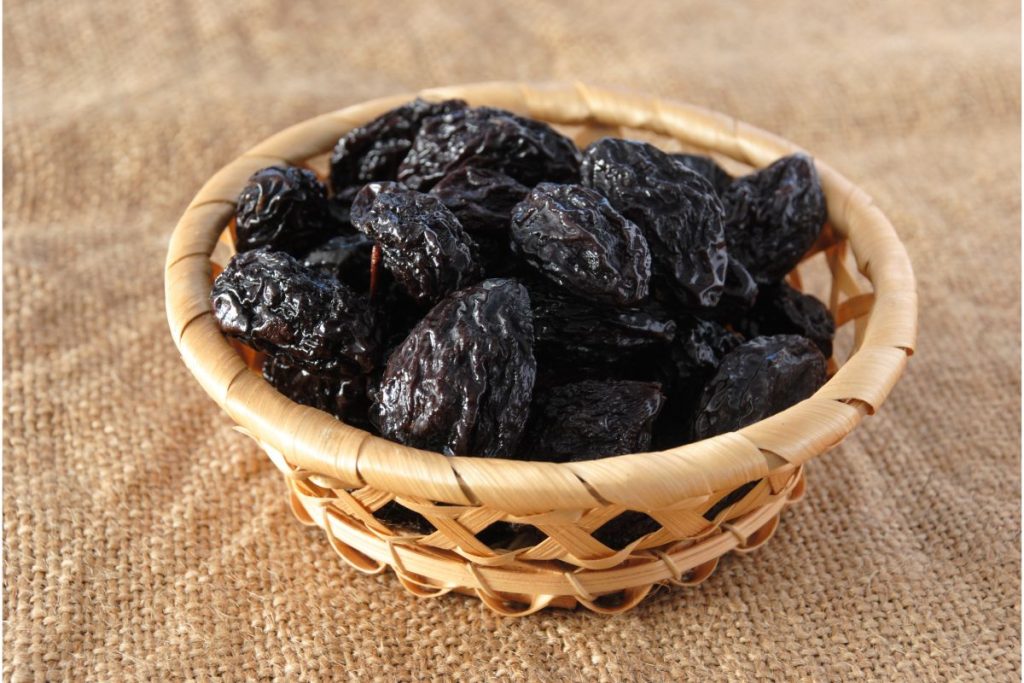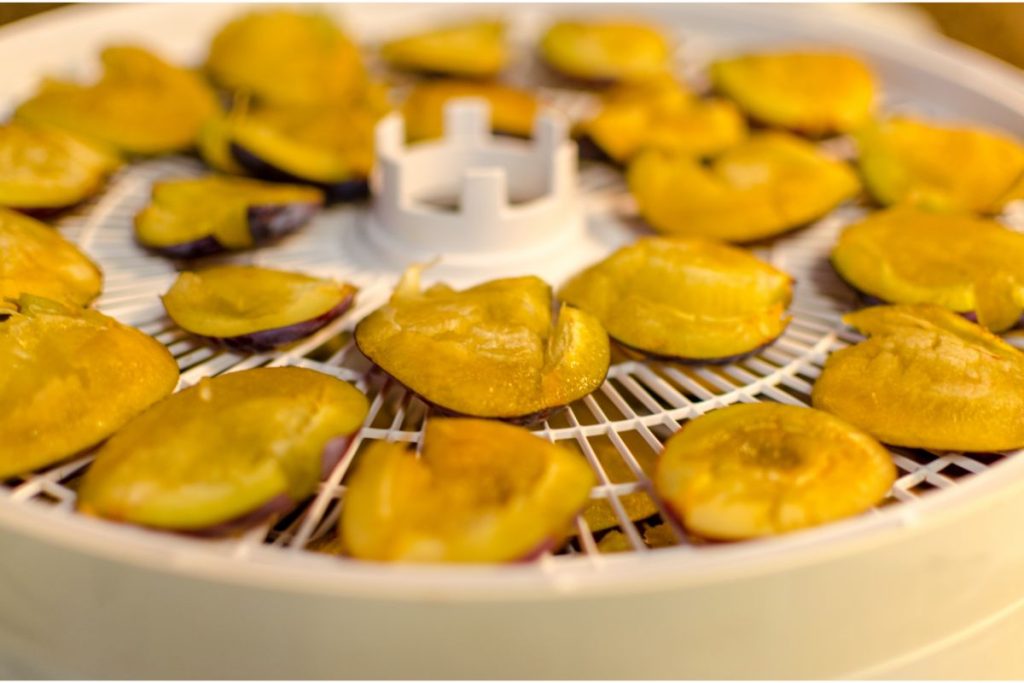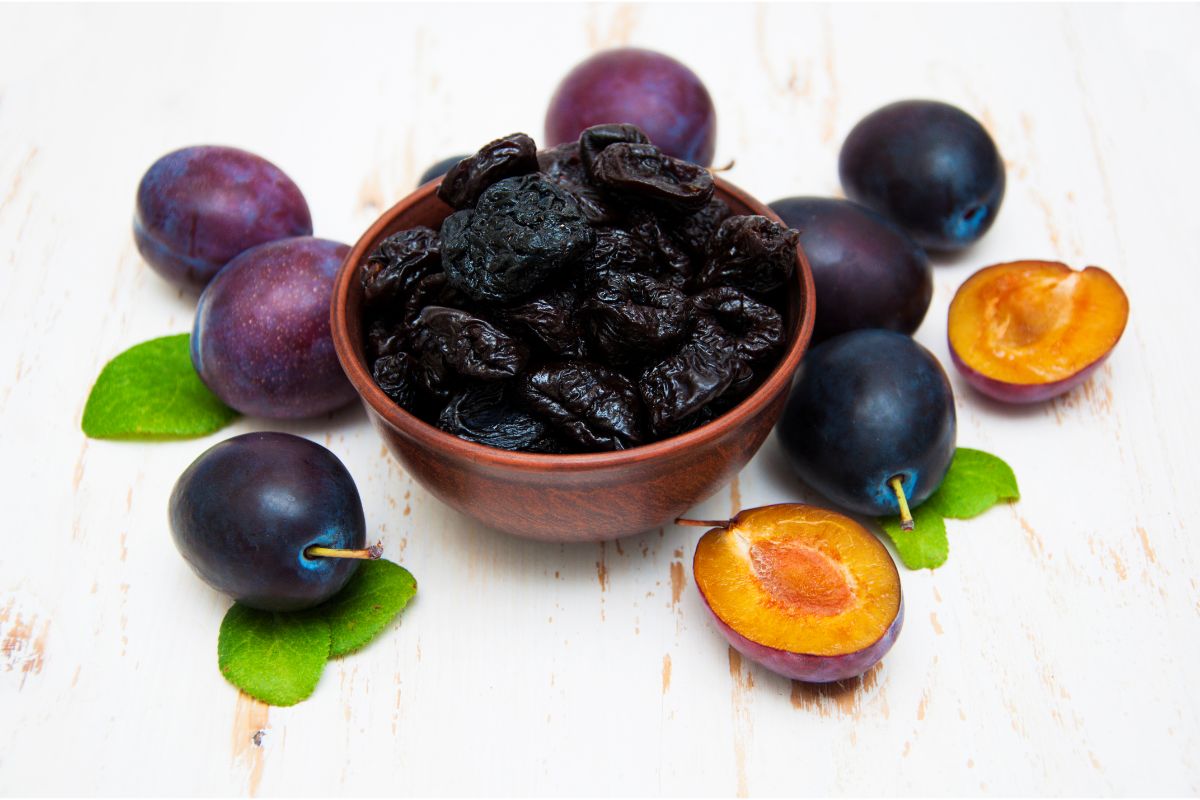Dried fruits such as unopened homemade or store-bought dried prunes do not need to be refrigerated. They should be stored at room temperature in a cool, dry, dark place. Once opened, dried prunes need to be refrigerated in airtight containers and used within 6 months.
Table of Contents
When Should Prunes Be Refrigerated?
Refrigerate dried prunes once you open them. Since they have a high sugar content that is concentrated by drying, this makes them vulnerable to rotting and mold.
When dry plums are exposed to the air, oxidation occurs, which causes gradual flavor loss. Refrigeration reduces oxidation, preserving flavor. Storing dried prune plums in airtight sealed containers in a refrigerator extends their shelf life by up to six months.
Can Prunes be Stored at Room Temperature?
Unopened dehydrated prunes or dried plums can be stored at room temperature.
The USDA says unopened dried prunes stored at room temperature can last up to six months. This storage duration can be extended to 12 months in cooler, low-humidity areas.

How Do You Tell if Dried Prunes Have Gone Bad?
Dried plums are prone to spoilage when not stored properly. Here are some signs your dried prunes have gone bad:
- Bad odor: Rotting or molding prunes have a dust-like smell.
- Bland taste: Loss of taste indicates your prunes are too old and may be going bad.
- Discoloration: Prunes get darker as they go bad.
- Extra hardness and chewiness: Spoiled dry prunes may become harder to chew.
- Presence of mold: Not to be confused with the crystallized natural sugar that forms on prunes.
- Softness: Dried prunes may absorb moisture in the fridge or air and become overly soft.
Why Make Dried Prunes at Home?
While commercially dried prunes are delicious, they don’t last as long as their homemade counterparts. The ones you buy dried are dehydrated whole and contain a lot of residual moisture, which makes them prone to spoilage.
How to Make Dried Prunes in a Dehydrator
Here’s how to make long-lasting homemade prunes:
- Select only high-quality fresh plums for dehydration.
- Wash the plums under cool running water, taking care not to squeeze them too hard to avoid rupturing them. Dab them with paper towels to remove excess water.
- Use a sharp knife to slice each plum in half or into four quadrants. Remove the pits and stems.
- Arrange the sliced plums on dehydrator trays in a single layer, ensuring they don’t overlap and air can circulate between them.
- Set the temperature to 115°F and dry the plums for 8-14 hours. Drying time will depend on humidity and the thickness of the fruit.
- Check the progress every hour after the first four. Turn over the prunes as soon as the top of the pieces dry. Dried prunes should have a wrinkly texture and no moisture in the flesh when you squeeze them.
- Take out a few slices and cool them to room temperature. Test them for dryness.
- Cool the dried prunes for 30-60 minutes at room temperature before conditioning them.
- Condition the dried fruits for a week in airtight food storage containers, shaking each container 1-2 times daily. Ensure no condensation forms on the inside of the containers.
- Store the fully dried prunes at room temperature in airtight containers like glass jars in a cool, dry, dark place.

How to Make Dried Prunes in an Oven
If you don’t have a food dehydrator, you can use an oven instead:
- Prepare the fresh plums by washing them, patting them dry, and removing the stems and pits.
- Cut the plums into separate halves or quarters using a small sharp knife.
- Place the pieces in a single layer on a foil-lined baking tray to capture the juice released by the drying prunes.
- Set the oven to its lowest temperature and dry the plums for 6-8 hours. Prop the oven door open slightly to promote aeration and allow humidity to escape.
- Check the prunes every few hours and flip them often for even drying.
- Once fully dry, remove the dried fruits and cool them to room temperature.
- Place them in airtight containers and condition them for a week. Check for stickiness or condensation in the container.
- Store dried prunes in airtight containers at room temperature in a cool, dark, dry place.
What are the Benefits of Eating Prunes?
Prunes and prune juice are famous for promoting a healthy digestive system. Here are some other health benefits of eating prunes:
- Pectin, a soluble fiber in prunes, may help your body control cholesterol levels
- Prunes are rich in fiber, phytonutrients, and sorbitol, which help promote bowel function
- The fiber in prunes helps alleviate constipation
- The potassium in prunes helps regulate blood pressure, nerve function, muscle function, and heart rhythm
- The vitamin K, magnesium, and phosphorus in prunes help protect bone density
- You can use prunes to enhance bone health and reduce the risk of osteoporosis.

How Long Do Sunsweet Prunes Last?
Unopened commercially dried prunes such as Sunsweet Prunes and California Prunes last 6-12 months at room temperature.
Extend the shelf life of store-bought dried prunes by storing them in the refrigerator for six months or freezer for up to 12 months.
Can You Freeze Dried Prunes?
You can freeze prunes. The best way to freeze opened dried prunes is to keep them in vacuum-sealed airtight containers like freezer bags, then lay them flat in the freezer.

